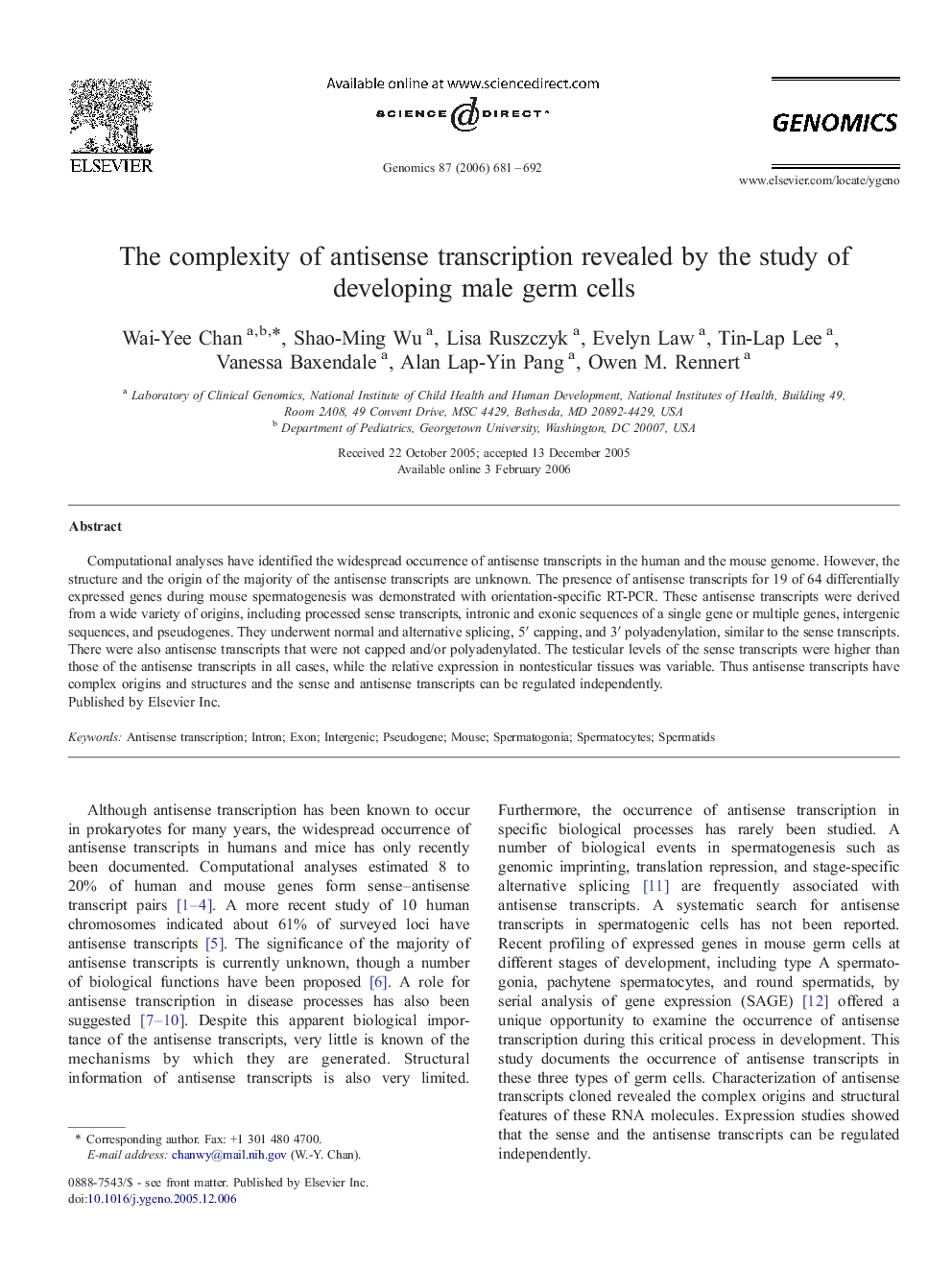| Article ID | Journal | Published Year | Pages | File Type |
|---|---|---|---|---|
| 2821738 | Genomics | 2006 | 12 Pages |
Computational analyses have identified the widespread occurrence of antisense transcripts in the human and the mouse genome. However, the structure and the origin of the majority of the antisense transcripts are unknown. The presence of antisense transcripts for 19 of 64 differentially expressed genes during mouse spermatogenesis was demonstrated with orientation-specific RT-PCR. These antisense transcripts were derived from a wide variety of origins, including processed sense transcripts, intronic and exonic sequences of a single gene or multiple genes, intergenic sequences, and pseudogenes. They underwent normal and alternative splicing, 5′ capping, and 3′ polyadenylation, similar to the sense transcripts. There were also antisense transcripts that were not capped and/or polyadenylated. The testicular levels of the sense transcripts were higher than those of the antisense transcripts in all cases, while the relative expression in nontesticular tissues was variable. Thus antisense transcripts have complex origins and structures and the sense and antisense transcripts can be regulated independently.
